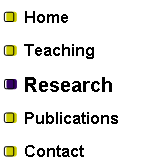

|
Main research themes and ongoing work |
|
Pawel Herman Researcher, PhD Department of Computational Biology School of Computer Science and Communication KTH Royal Institute of Technology, Stockholm, Sweden email: <paherman at kth dot se>,†† phone: (+46) 08 790 6513 |
|
Biophysically detailed cortical network models My research interests are deeply steeped in brain and information science. My work to date has been at the crossroads of these two fields, sometimes broadly referred to as neuroinformatics. To be more precise, my research to date has revolved around scientific questions in computational and cognitive neuroscience, brain data analysis, brain-inspired computing, brain-computer interfacing (BCI) and computer-aided brain diagnostics. In this quest for understanding, I have extensively relied upon the breadth of computer science methodology and have made some contributions to its development. The last few years I have mainly devoted to computational neuroscience. In Prof. Anders Lansnerís lab we have developed competence in large-scale modelling of cortical networks with the focus on bridging the gap between the brain function and the underlying mesoscopic-level biological processes. My area of special interest is centred on oscillatory and synchronisation phenomena emerging in biophysically detailed attractor network models as correlates of the simulated cortical memory, attention or perception. Abstract non-spiking network models I have also been involved in simulations of abstract non-spiking network models to investigate large-scale processing and coding of information in the brain. For example, we built a holistic model of the mammalian olfactory system to study mechanisms of odour recognition. Abstract network modelling approach has also been used in our work to study the potential of more generic brain-inspired computing paradigms with a view to extracting salient characteristics from any data sources. Our network models are deployed on supercomputers to exploit the intrinsic parallelism and distributed nature of biological networks capable of self-organisation to handle large data sets. This inevitably opens up new opportunities for brain-inspired analysis of neuroimaging data, which is one of the current themes in my investigations. Bio-inspired approaches to analysis of spatio-temporal data
Brain-computer interfacing |